A hive of activity – CAD designers are crafting an open future for bees
20 December 2016 12:00am
Wolf protection vests for dogs
14 December 2016 1:49pm
Discussion: Opinion of TEAM network and Wildlife Insights
7 June 2016 5:36am
30 June 2016 4:38am
I like TRAPPERs video capability.
I am yet to test it out though.
13 December 2016 12:47am
Hi Heidi,
You might also consider becoming involved in the eMammal project (emammal.si.edu) that the Smithsonian has recently developed. It has tools for both uploading and coding camera trap images, with the bonus that they are ultimately archived and made available by the Smithsonian for future researchers. My opinion is that moving toward open-access data will make all of our efforts more valuable into the future. I'm using eMammal, but not one of the developers or associated with the Smithsonian.
Cheers,
Robert
Parrot/Pix4D Climate innovation grant
6 December 2016 4:36pm
Relocating rhinos to Australia?!
5 December 2016 3:25pm
Measuring distances between GPS points from a satellite collar
12 July 2016 6:55pm
14 July 2016 11:53am
Figured it out.
Even though I was in the right projection (ie: UTM), I was not aware that I had to calculate the coordinates myself. All you need to do is create two new columns for X and Y coordinates, and right click in each column: choose calculate geometry, and then select X and Y according to the column you're at. It calculates the coordinates in your chosen unit (mine is meters). The "new" coordinates can be used then in adehabitatLT to obtain distance measurements in a trajectory.
4 December 2016 5:21am
Hey MGatta, I'm working with adehabitatLt as well, i have a good paper on spatial referencing your data and changing your coordinates to UTM, if you want it (by C.J.Brown).
I assume that the process you did to change to meters was in Excell, before using the coordinates in R?
Kind regards,
Sam
Deploying marker buoys to demarcate an MPA
30 November 2016 2:43am
Experience with DJI drones?
23 March 2016 3:45pm
13 April 2016 10:32am
Hi Jprobert.
I don't have experience with DJI drones but I do have quite a bit of experience with 3DR and drones in general.
What are you using the drones for? Get in touch if you'd like some advice.
Tom
27 November 2016 11:20pm
Hi Jprobert,
I have been trying to use my Phanton 3 proffessional together with Pix4Dmapper to trial out some forest mapping in Principe Island.
if you are interested check it out the interview I give to CNN Inside Africa about how drones and 3D mapping technologies are bringing our knowledge of Principe island’s forests into the 21st Century.
http://edition.cnn.com/videos/world/2016/11/07/inside-africa-sao-tome-and-principe-biosphere-b.cnn
“How Sao Tome and Principe embraced ecotourism: Sao Tome and Principe is promoting small-scale, high-end tourism, preserving the island's ecosystems so they can be enjoyed for years to come. Source: CNN”
Also If you want know more about the use of drones for conservation check the full story at FFI website:
http://www.fauna-flora.org/putting-principe-back-on-the-map-with-3d-technology/
Regards,
Felipe Spina
Linkedin: https://www.linkedin.com/in/felipe-spina-avino-91716193
Open source vs intellectual property
23 November 2016 2:17pm
SMART Hackathon, 28th November in Las Vegas
23 November 2016 11:00am
Conservation Leadership Programme 2017 Award
21 November 2016 12:00am
CSI for the Sea: How Scientists Use DNA to Spy on Whales and Find 'Extinct' Fish
18 November 2016 12:00am
Accelerators For Wildlife Conservation Apps?
31 October 2016 5:35pm
15 November 2016 7:54pm
Hi Judit,
She sounds like a great resource. I will be sure to reach out.
Thank you,
Megan
16 November 2016 3:26pm
Hi Megan,
It sounds very interesting the app you are developing. I am working for a smaller nature conservation Fund and am trying a partnership with a platform that is also in development and aimed at connecting people and organizations, facilitate update and knowledge sharing and increasing the visibility and donor pool of the organisations. As I said it's still in development but you can take a look if you like www.pifworld.com/eng. I am however also very curious to get to know other (potential) tools that work similar.
It would be great to chat one time to get better acquainted, maybe you can send me your contact details by PM if you'd like to follow up?
Best, Anne Alexandre
17 November 2016 5:08am
Hi Anne,
Thanks for reaching out and sharing what you are working on. I will PM you now.
DC Tech Meetup, November 15th
10 November 2016 4:15pm
16 November 2016 12:30pm
It looks like the event went swimmingly @Rachel+Kramer and @jprobert! Did you have a chance to meet any other members or hear about other particularly interesting projects? (photo credit: John Probert)
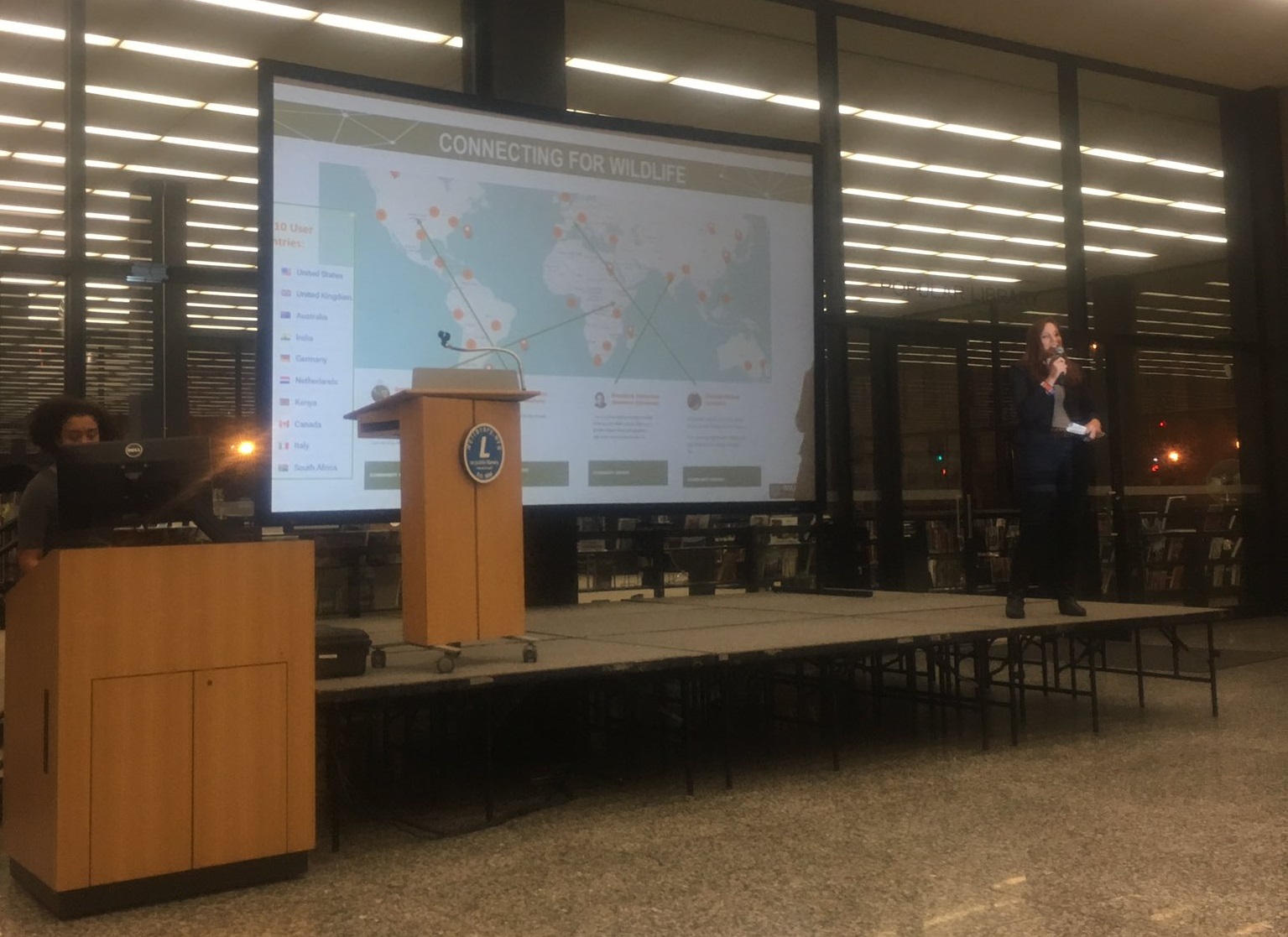
16 November 2016 7:28pm
It was amazing!!!!
September Meetup: Gaming for Conservation Impact, Thursday 29th Sept
27 September 2016 10:43am
10 October 2016 9:28am
Thanks Alasdair for signing up! Happy to welcome you as one of our test users. The link will follow in a bit, meanwhile feel free to join our Facebook Play Group to get weekly updates on our process and backstories of the amazing animals we're allowed to work with: https://www.facebook.com/groups/IoEPlay/
Corinna
16 November 2016 2:22pm
Im sorry I missed this event - I hope there will be others like it...
16 November 2016 2:32pm
Hi Karina,
There most definitely will be more events like this one. We are thinking of holding another gaming for conservation meetup in early 2017, potentially in London. Would that be of interest?
Hmm. having looked up where Wentworth institute of Technology is - looks like you're actually based in the USA Cambridge. Do you ever make it over to the UK? Otherwise, maybe we could look into organising something more local to you..
Steph
Carnivore Tracker app to document carnivores in Namibia
1 November 2016 2:59am
15 November 2016 7:09pm
Thanks Karin! Very interesting app. I will ask for permission to review it in my website.
Best
Judit
Kid-friendly wildlife apps
4 November 2016 4:16pm
9 November 2016 11:54am
Hi Katzyna, we have an app called Instant Wild where you can see camera trap images coming in and help identify what is in them - you can take a look/find out more at http://www.edgeofexistence.org/instantwild
Chloe
15 November 2016 4:47pm
Hi Katzyna,
Not an app, but United for Wildlife are releasing a new free online course on the illegal wildlife trade on the 17th that has Vietnamese subtitles and transcripts available. The website with the course is here: http://learn.unitedforwildlife.org/ but the new course won't be live until the 17th. I am happy to send you some further information on this if you would like?
Just let me know!
15 November 2016 6:32pm
Hi katzyna,
Of those I know, there are none that meets the two criteria that interest you. For example, Wildscan allows you to report illegal wildlife trafficking in Asia, but I don't consider it as kid friendly. Maybe WildSense, to save tigers, or even the app of WWF are more suitable. Also you can take a look to Virry, from UK, or QuestaGame, from Australia.
Best,
Judit
Open Tag IMU data analysis
2 November 2016 9:06pm
15 November 2016 11:13am
Hi Michael
I made some progress on a Java library and little GUI but I did not finish it. Although I managed the boring stuff, unpacking the DSG files and put some nifty magnetic calbration stuff in.
This is NOT a finished or functional product but it is open source, so if anyone wanted to finish it off, I'd be more than happy. I intend to do it eventually but at the back of the list opf things to do.
The application main class is here: It's integrated into a larger application but can be used as a standalone app. Good luck to anyone who wants to take it on- make sure any further work stays accessible and open please.
Cheers
Jamie
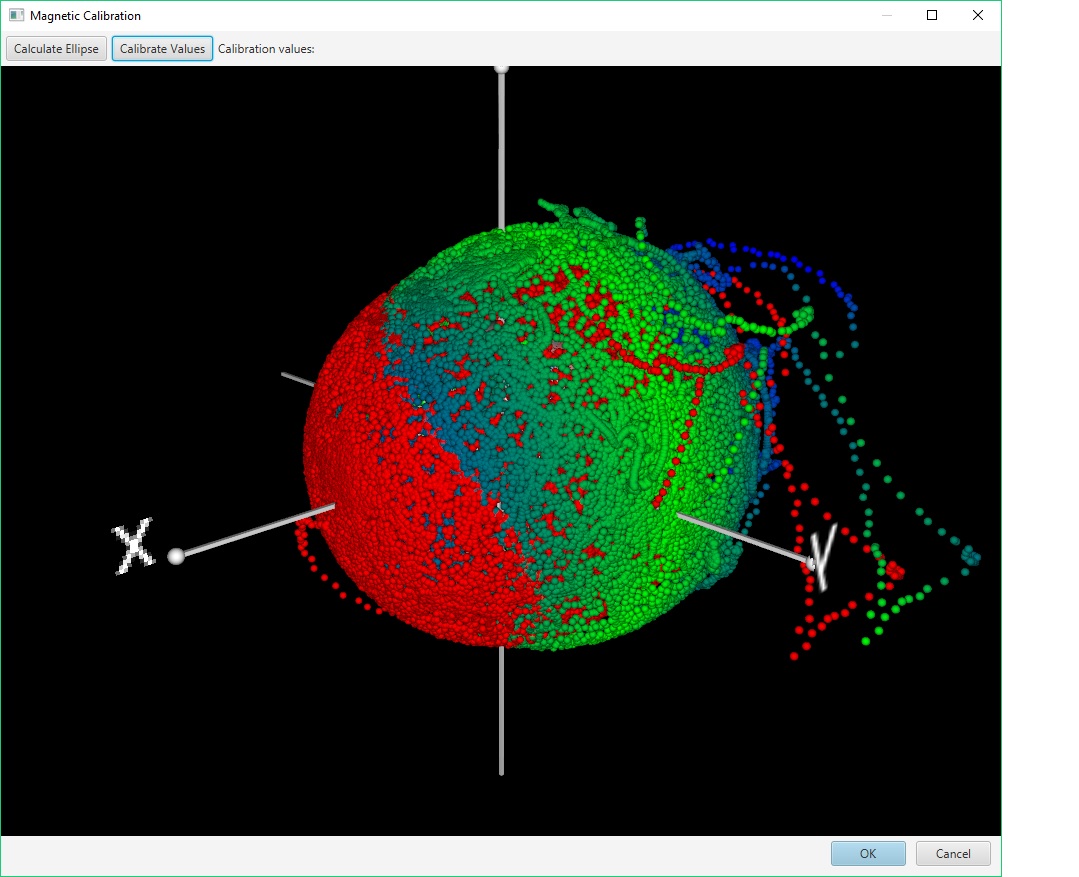
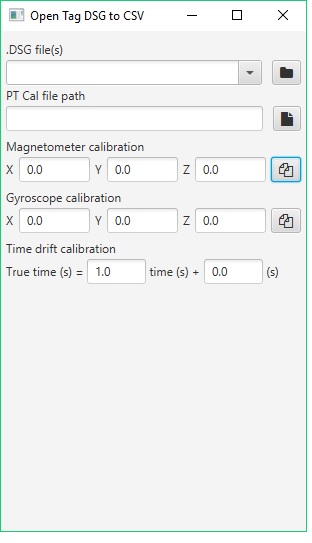
5 Smart Technologies That Will Crack Down On Wildlife Trafficking
14 November 2016 12:00am
Standardization Discussion: Nomenclature
5 October 2016 4:48am
31 October 2016 2:18pm
Camera trapping is the new kid on the block, and it is still talking like a 5-year old ! It will take some time, and some journal editors insisting on uniform and properly used terms before everyone can be sure what everyone else is talking about.
For what it's worth, here is what I understand when I read the terms you list;
Survey - the process of designing the study, putting out and servicing the camera traps, collating and analysing data and writing it up. So much much more than just the time that the camera traps were in the field.
Site - a spot on the ground. Usually these days specified as a GPS location. What you describe as a site I would call a study area.
Station - I do not recall having read this in connection with camera traps, and I would not use it. I admit that this is not consistent; I have read and I would use "bait station" or "feeding station" interchangebly with "baiting site" or "feeding site". It is of course possible to station a camera trap at a baiting site, or site a camera trap at a feeding station !!
Camera - is certainly a physical device that takes photos, but you cannot record animals with just a camera, you need someting to trigger it. A self-triggering camera is a camera trap (or trail camera, game camera etc).
A station session (see above about station) would be OK is site was substituted for station.
Peter
12 November 2016 2:39pm
Hi folks,
for Site - in our camera trap data base we use the mountain or National/Nature park
Survey - is connected to the time scale - i.e. This mountain2015 or 2016
Station is the actual place of the cameras (1 or 2) with GPS coordinates
Diana
We Can Have Oceans Teeming with Fish with FishFace Technology
10 November 2016 12:00am
Article and Discussion: Scale of camera trap studies
25 August 2016 11:50am
5 October 2016 3:37pm
@heidi.h Definitely a valid question. It looks like they have it connected to a zooniverse project, which means they are using citizen science to not only set up and maintain the cameras, but to process the data. Pretty neat.
What we do
Our main task is to get our trail camera volunteers up and running with equipment and training. Volunteers can now apply to host a camera in Wisconsin survey blocks where they have access to land (visit dnr.wi.gov, keyword "Snapshot Wisconsin" for more information). Trail camera volunteers are in charge of setting up a camera and retrieving its SD card (containing saved photos) at least four times per year. Volunteers then send the photos to WDNR to be posted on Zooniverse. By the end of 2017, we expect to have enough cameras for > 2000 volunteers to participate in the project -- these cameras will produce millions of photos each year!
While we get our trail camera volunteers set up, we have plenty of other photos to show the Zooniverse community. WDNR staff have placed over 300 trail cameras in two areas of the state now home to a species of elk (Cervus elaphus) formerly abundant throughout North America. Elk were extirpated from Wisconsin in the 1800s due to overhunting and habitat loss. Reintroduction efforts began in 1995 and continue today, and we're curious to know how the elk are doing! Classifying the photos from the elk reintroduction areas will give us great information about population size and distribution, and examine how elk presence overlaps with that of wolves--natural predators of elk.
5 October 2016 3:42pm
But in answer to your question, @P.Glover.Kapfer , I haven't heard of any near this large. TEAM Network would be the closest - 17 sites, 14 countries and approximately 1000 camera traps deployed over 2000km 2 that are monitored annually. @efegraus - does TEAM Network have ambitions to be expand to this sort of scale?
@ollie.wearn perhaps you might know of some other big scale camera trapping projects?
8 November 2016 1:15pm
Bringing over some of the comments we're getting on Twitter:
@WILDLABSNET Our @UAlberta lab deploys ARUs at 1000s of sites in Alberta each year in collaboration with @ABbiodiversity #bioacoustics
— Elly Knight (@ellycknight) November 7, 2016
@WILDLABSNET yeah, @TEAMNetworkOrg does that...pretty sure thousands of cameras across 15 or sites
— Asia Murphy (@am_anatiala) November 4, 2016
How do you use remote sensing tech to combat wildlife and forest crime?
14 July 2016 10:43am
27 July 2016 6:48pm
Great! Looking forward to learning your results in August.
1 August 2016 9:19pm
Excellent thread! I look forward to hearing the results of the survey.
8 November 2016 10:25am
Hi everyone,
Isla has shared the results of this survey in a new article in our Resources area. You can read her full analysis of the survey results here:
https://www.wildlabs.net/resources/thought-pieces/what-are-risks-associated-using-remote-sensing-technology-combat-wildlife
I am interested to hear your thoughts about these results - do they match your expectations?
Steph
Neotropical Migratory Bird Conservation Act grants via USFWS
8 November 2016 12:00am
Basic GIS vector and raster datatsets
7 November 2016 1:47pm
How do Wildlife Crime Experts view Remote Sensing Technologies used to Combat Illegal Wildlife Crime?
7 November 2016 12:00am
Wildlife Conservation Expo · Oct 8 in San Francisco, CA, USA
10 September 2016 7:58pm
5 November 2016 12:39am
It's a wonderful event and I hope some folks from this community might attend next time. Great opportunity to meet the conservationists.
WildLabs success! E-shepherd predator deterrent trials in USA
25 January 2016 8:04pm
11 February 2016 8:14pm
Thanks, @Suzanne.Stone ! It would be wonderful if the community could track your progress in this thread. Also looking forward to reading your Journal of Mammology paper.
- Rachel
26 April 2016 2:12pm
@Rachel , the last time I checked (2015), it was about R1200-00 per collar. In South Africa that can be approximated as the price of one sheep. To my mind, that only makes it viable and affordable if the predation (or theft?) levels are very high (more than 10% losses/year?).
I have to add two additional observations:
- Sheep breeds differ in the extend to which they flock together in a single herd (e.g. African indigenous breeds graze together in larger herds than the most popular breeds in South Africa (Merino or Dorper). In these breeds it might be possible to have less collars per sheep.
- My greatest fear is that it will work wel for a year or two. Jackals (and I assume coyotes as well) are extremely intelligent. And methods which worked at first (e.g. bell collars) soon became useless. With jackals we also have the issue that many of the jackals on farms are now starting to hunt in packs instead of the typical territorial pairs (with helpers). So a commonly solitary hunter (the pairs would often hunt separately) is now turning into a pack hunter. However, I do think that it might remain fairly effective against solitary cats. I would be interested in the results of the tests in America, but I think it should be for at least a 3 year period (I know funding etc. might be an issue).
3 November 2016 5:09pm
@Suzanne.Stone have you had any success with your trials in Idaho?
Moonshots - Where will we be in five years?
7 October 2016 4:52pm
3 November 2016 9:05am
Hi Courtney,
sounds are indeed a very interesting theme. If you ask me, it is one of the most underestimated senses, especially when we are talking about wildlife protection. People tend to make quite a lot of noices that distinguish them from animals ;-)
I am working on a prototype 'soundscape sensor'. The basic idea is to record all sounds at a particular location and calculate a kind of 'normalised' sound. This summary can then be used to listen to sounds that deviate from that. Could be chainsaws, gun shots, car engines, talking people, barking dogs, whatever.
By feeding these sounds to rangers with local knowledge, or to a crowd (like Panthera is doing), the sensor's performance improves over time.
Although we think our first prototype will be ready by the end of this year (recognizing one particular sound within an outdoor environment), subsequent steps are quite challenging. Especially when more than one or two sounds occur at the same time.
If you ask me where we will be in the next few years, I would say:
2017: recognizing any trained sound within a given field context (using a Raspberry)
2018: learning to distinguish compounded sounds (using a backend server)
2019: idem, but then much more efficient, so we can run it on a Raspberry pi
Interested to help us to create this?
Cheers,
Jan Kees
3 November 2016 9:19am
My moonshot would be increased used of DSP in underwater acoustic monitoring, to enable small arrays to filter out engine noise to look for vocalisations; statis reflections of exiting noise sources, and doppler reflections too. Heavyweight DSP might be enough to gauge the size of objects and a useful distance estimate too…
3 November 2016 9:56am
sorry, double entry
Using GoPro cameras? Why not get sponsored by them?
29 December 2015 9:40pm
31 October 2016 2:47pm
Sport, Music, Event, Film/Photo are the only options I see on that link - nothing for conservation research.
1 November 2016 1:09pm
All of it can be applied to conservation though!
1 November 2016 1:45pm
I am not suggesting that GoPro cameras do not have applications in conservation, but if you follow the link you posted you will find questions being asked that a conservation project will be unable to answer.


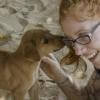
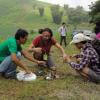
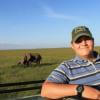
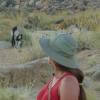



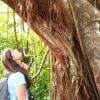











24 June 2016 6:08am
Thank you. I had not seen TRAPPER.
I had seen Snoopy, CameraBase, the Sanderson & Harris executables, and TEAM. And none of them had seemed suitable for the work that I was doing.
I will investigate TRAPPER further.